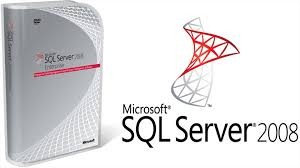 1. What are the basic functions for master, msdb, model, tempdb and resource databases?
1. What are the basic functions for master, msdb, model, tempdb and resource databases?
The master database holds information for all databases located on the SQL Server instance and is theglue that holds the engine together. Because SQL Server cannot start without a functioning masterdatabase, you must administer this database with care.
The msdb database stores information regarding database backups, SQL Agent information, DTS packages, SQL Server jobs, and some replication information such as for log shipping.
The tempdb holds temporary objects such as global and local temporary tables and stored procedures.
The model is essentially a template database used in the creation of any new user database created in the instance.
The resoure Database is a read-only database that contains all the system objects that are included with SQL Server. SQL Server system objects, such as sys.objects, are physically persisted in the Resource database, but they logically appear in the sys schema of every database. The Resource database does not contain user data or user metadata.
2. What is Service Broker?
Service Broker is a message-queuing technology in SQL Server that allows developers to integrate SQL Server fully into distributed applications. Service Broker is feature which provides facility to SQL Server to send an asynchronous, transactional message. it allows a database to send a message to another database without waiting for the response, so the application will continue to function if the remote database is temporarily unavailable.
3. Where SQL server user names and passwords are stored in SQL server?
They get stored in System Catalog Views sys.server_principals and sys.sql_logins.
4. What is Policy Management?
Policy Management in SQL SERVER 2008 allows you to define and enforce policies for configuring and managing SQL Server across the enterprise. Policy-Based Management is configured in SQL Server Management Studio (SSMS). Navigate to the Object Explorer and expand the Management node and the Policy Management node; you will see the Policies, Conditions, and Facets nodes.
5. What is Replication and Database Mirroring?
Database mirroring can be used with replication to provide availability for the publication database. Database mirroring involves two copies of a single database that typically reside on different computers. At any given time, only one copy of the database is currently available to clients which are known as the principal database. Updates made by clients to the principal database are applied on the other copy of the database, known as the mirror database. Mirroring involves applying the transaction log from every insertion, update, or deletion made on the principal database onto the mirror database.
6. What are Sparse Columns?
A sparse column is another tool used to reduce the amount of physical storage used in a database. They are the ordinary columns that have an optimized storage for null values. Sparse columns reduce the space requirements for null values at the cost of more overhead to retrieve nonnull values.
7. What does TOP Operator Do?
The TOP operator is used to specify the number of rows to be returned by a query. The TOP operator has new addition in SQL SERVER 2008 that it accepts variables as well as literal values and can be used with INSERT, UPDATE, and DELETES statements.
8. What is CTE?
CTE is an abbreviation Common Table Expression. A Common Table Expression (CTE) is an expression that can be thought of as a temporary result set which is defined within the execution of a single SQL statement. A CTE is similar to a derived table in that it is not stored as an object and lasts only for the duration of the query.
9. What is MERGE Statement?
MERGE is a new feature that provides an efficient way to perform multiple DML operations. In previous versions of SQL Server, we had to write separate statements to INSERT, UPDATE, or DELETE data based on certain conditions, but now, using MERGE statement we can include the logic of such data modifications in one statement that even checks when the data is matched then just update it and when unmatched then insert it. One of the most important advantages of MERGE statement is all the data is read and processed only once.
10. What is Filtered Index?
Filtered Index is used to index a portion of rows in a table that means it applies filter on INDEX which improves query performance, reduce index maintenance costs, and reduce index storage costs compared with full-table indexes. When we see an Index created with some where clause then that is actually a FILTERED INDEX.